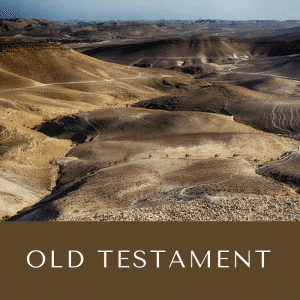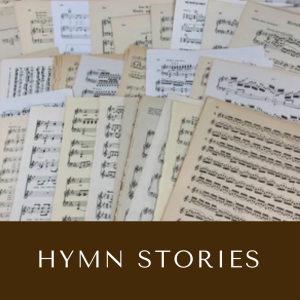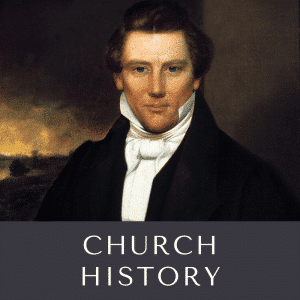Description
Rescuing the Nauvoo “Poor Saints”
Over two thousand Saints left Nauvoo by mid-March 1846, and additional hundreds left in both April and May. But many still remained in the city. Before leaving, President Young had appointed three men—Joseph L. Heywood, John S. Fullmer, and Almon W. Babbitt—to act as legal trustees to sell Church and private properties, pay the most pressing debts and obligations, and provide for the safe departure of those unavoidably left behind. He also assigned Orson Hyde to supervise the completion and dedication of the Nauvoo Temple.
Temple workmen completed their assignment by the end of April, and the sacred edifice was prepared for dedication. Wilford Woodruff arrived from his mission to Great Britain in time for the ceremonies. On 30 April, Orson Hyde, Wilford Woodruff, and about twenty others dressed in their temple robes dedicated the house of the Lord.
Wilford Woodruff recorded,
“Notwithstanding the many false prophesies of Sidney Rigdon and others that the roof should not go on nor the house be finished and the threats of the mob that we should not dedicate it, yet we have done both.”
The next day, 1 May 1846, Church leaders in Nauvoo conducted a public dedication. Elders Hyde and Woodruff then left for Iowa to join the rest of the Twelve. When opponents of the Church realized that not all the Saints were going to leave Nauvoo by summer, persecution began anew. Men and women harvesting grain were attacked and some were severely beaten. This type of harassment lasted all summer and into the fall of 1846. Meanwhile the Quorum of the Twelve decided to sell the Nauvoo Temple to raise funds for outfitting the remaining Nauvoo Saints. All attempts to sell the edifice failed.
By mid-August less than fifteen hundred Saints remained in Nauvoo, some of them new converts from the East who had arrived too late to join the earlier companies. Most of them had exhausted their savings just to reach Nauvoo and now looked to Church leaders as their only hope to proceed West. By the second week in September the anti-Mormons were determined to drive the Saints out of Nauvoo. Approximately eight hundred men equipped with six cannons prepared to lay siege to the city. The Saints and some new citizens, numbering only about 150 fighting men, prepared to defend the city. The Battle of Nauvoo began on 10 September, with sporadic firing.
During the following two days there were minor skirmishes. On 13 September an anti-Mormon column advanced in an attempt to rout the defenders. A spirited counterattack led by Daniel H. Wells saved the day, but there were casualties on both sides. The battle continued the next day, which was the Sabbath. On 16 September, the “Quincy committee,” which had helped keep the peace in previous months, interceded once again. The Saints were forced to surrender unconditionally in order to save their lives and gain a chance of escaping across the river. Only five men and their families were allowed to stay in Nauvoo to dispose of property. Those who could quickly crossed the river without provisions or additional clothing.
Finally, the mob entered the city, looted homes, and desecrated the temple. Some Saints who were not able to escape fast enough were beaten or thrown into the river by the mob. Refugee camps of five to six hundred dispossessed men, women, and children, including those who had been left as too sick to travel, were scattered along two miles of riverbank above Montrose, Iowa. Most people had only blankets or bowers made of brush for shelter and little more than boiled or parched corn to eat. Some died. Bishop Newel K. Whitney purchased some flour and distributed it among the poor camps. The Church trustees went to river towns, including St. Louis, pleading for money and supplies for the refugees, but because of religious prejudices they only raised one hundred dollars.
On 9 October, when food was in especially short supply, several large flocks of quail flew into camp and landed on the ground and even on tables. Many of them were caught, cooked, and eaten by the hungry Saints. To the faithful it was a sign of God’s mercy to modern Israel as a similar incident had been to ancient Israel (see Exodus 16:13).
Even before they realized the terrible plight of the Nauvoo Saints, Church leaders in Iowa had sent a rescue mission, and when word of the Battle of Nauvoo reached Winter Quarters, a second mission was mobilized. Brigham Young declared, “Let the fire of the covenant which you made in the House of the Lord, burn in your hearts, like flame unquenchable, till you, by yourselves or delegates… [can] rise up with his team and go straightway, and bring a load of the poor from Nauvoo….This is a day of action and not of argument.”
Rescue teams arrived in time to save the Saints from starvation and winter exposure. The poor Saints were dispersed throughout various camps in western Iowa. A handful made it all the way to Winter Quarters. Throughout the fall of 1846, the nearly twelve thousand Latter-day Saints in various parts of the Midwest prepared for winter the best ways they could. The headquarters of the Church was at Winter Quarters in Indian territory, where almost four thousand Saints resided by the end of the year. Another twenty-five hundred were camped on Pottawattomie Indian lands on the east side of the Missouri River. An estimated seven hundred people were at Mount Pisgah, six hundred at Garden Grove, at least a thousand were spread throughout other parts of Iowa, and five hundred were in the Mormon Battalion on their way to California. Many Saints gathered for the winter in Mississippi River towns; the Mormon population in St. Louis swelled to fifteen hundred.
Never had the Church’s membership been so scattered and so poorly housed. The phrase “Zion in the wilderness” aptly depicts the Church’s difficult situation during the winter of 1846-47.
Source:
Church History in the Fulness of Times, p.317-19
Copyright Glenn Rawson















Reviews
There are no reviews yet.